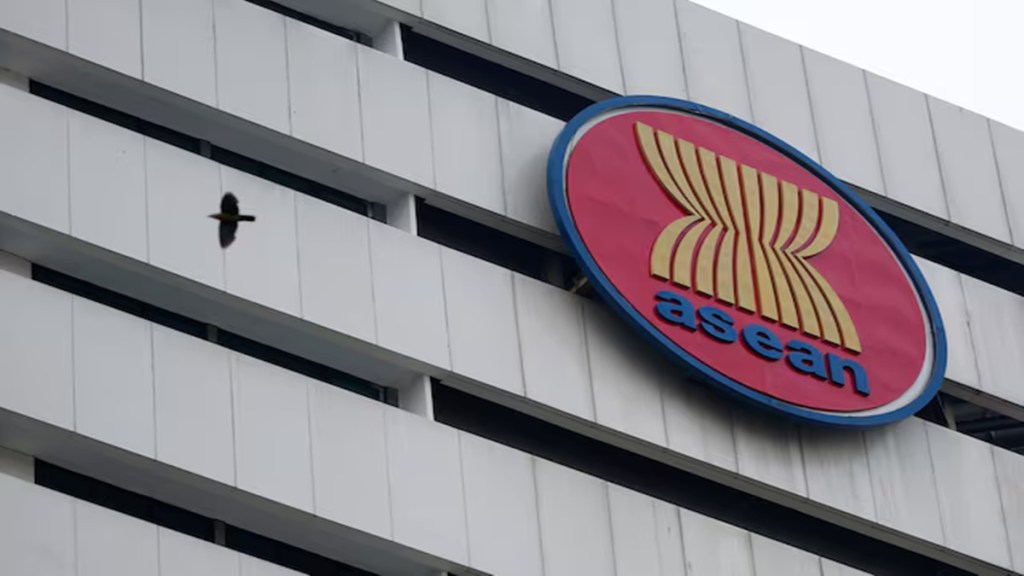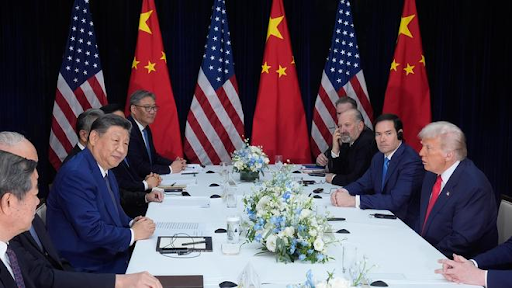



ASEAN is reportedly delaying the review of its trade pact with India (AITIGA), despite multiple negotiation rounds. India is pushing for changes, citing a soaring trade deficit, imbalanced tariff reductions, and the routing of Chinese goods through ASEAN nations, but progress toward the 2025 deadline has been extremely slow.

Copyright infringement not intended
Picture Courtesy: FINANCIAL EXPRESS
ASEAN is delaying the ASEAN-India Trade in Goods Agreement (AITIGA) trade pact review with India.
The AITIGA is a Free Trade Agreement (FTA) between India and the ten member states of the Association of Southeast Asian Nations (ASEAN).
It was signed in 2009 and operational since 2010, its primary goal was to boost trade by eliminating or reducing tariffs (customs duties) on a wide range of goods traded between the two regions.
Over the years, the agreement has not delivered the expected benefits for India, prompting India to push for a comprehensive review of its terms.
Massive and Widening Trade Deficit => Since AITIGA came into effect, India's trade deficit with ASEAN has increased. It widened from around $5 billion in 2010-11 to $43.57 billion in 2022-23. This indicates that while ASEAN's exports to India have increased, India's exports to ASEAN have not grown at a comparable rate.
Non-Reciprocal and Asymmetrical Tariff Reductions => India argues that it offered more generous tariff concessions than it received. For example, under the agreement, India slashed duties on 71% of its traded products. In contrast, key ASEAN members offered fewer concessions. This has created an uneven playing field, making it easier for ASEAN goods to enter the Indian market than for Indian goods to enter ASEAN markets.
"Routing" of Chinese Goods => A major loophole in the agreement is the issue of Rules of Origin. These rules are meant to ensure that only goods genuinely produced within the FTA partner countries get tariff benefits. India has strong evidence to suggest that China is routing its products through ASEAN countries to take advantage of the low tariffs under AITIGA.
Goods with minimal value addition in an ASEAN country (often just packaging or minor assembly) are being labeled as "Made in ASEAN" and dumped into the Indian market, bypassing the higher tariffs that would apply to direct imports from China.
Non-Tariff Barriers (NTBs) => While tariffs have been reduced, Indian exporters face NTBs in ASEAN markets. These include complex import regulations, bureaucratic documentation, and restrictive quotas, which restrict market access for Indian products.
India has been pushing for a review of AITIGA since 2015, however, ASEAN agreed to begin the review process in 2019, even after this, the actual negotiations have been slow and unproductive.
Reports suggest that the ASEAN bloc is delaying the process. Nine rounds of negotiations have taken place, but progress remains limited.
Both sides have set a target to conclude the review by the end of 2025. With time running out, the slow pace of negotiations is a major point of friction.
Symmetrical Tariff Reductions => Ensure that ASEAN countries offer market access comparable to what India provides.
Strengthening Rules of Origin => Implement stricter RoO provisions and enhance cooperation on verification to prevent the routing of goods from non-member countries like China.
Removal of Non-Tariff Barriers => Create a transparent mechanism to identify and eliminate Non-Tariff Barriers (NTBs) that restrict Indian exports.
Introducing Modern Trade Provisions => Update the agreement to include contemporary elements like trade facilitation, streamlining of customs procedures, and mechanisms for addressing disputes more effectively.
The AITIGA review is a critical test for the India-ASEAN relationship. India is firm in its demand for stricter Rules of Origin, a more balanced tariff reduction schedule, and the removal of non-tariff barriers.
The success of these negotiations will determine whether the FTA can be transformed into a mutually beneficial partnership or if it will remain a source of economic strain for India. The outcome will have significant implications for India's trade policy and its "Act East" Policy.
Must Read Articles:
PM Visit to Laos for ASEAN-India
Source:
|
PRACTICE QUESTION Q. Consider the following statements about the Association of Southeast Asian Nations (ASEAN): 1. ASEAN was established in 1967 with the Bangkok Declaration. 2. The current membership of ASEAN includes 12 countries. 3. The ASEAN Secretariat is located in Bangkok, Thailand. Which of the above statements are incorrect? A) 1 and 2 only B) 2 and 3 only C) 1 and 3 only D) 1, 2 and 3 Answer: B Explanation: Statement 1 is correct: The Association of Southeast Asian Nations (ASEAN) was established on August 8, 1967, with the signing of the Bangkok Declaration by the founding members: Indonesia, Malaysia, the Philippines, Singapore, and Thailand. The declaration aimed to promote regional cooperation and stability. Statement 2 is incorrect: ASEAN currently has 10 member countries: Brunei, Cambodia, Indonesia, Laos, Malaysia, Myanmar, Philippines, Singapore, Thailand, Vietnam. Statement 3 is incorrect: The ASEAN Secretariat is located in Jakarta, Indonesia. The Secretariat was established to provide greater efficiency in the coordination of ASEAN organs and to implement ASEAN projects and activities. |




© 2026 iasgyan. All right reserved